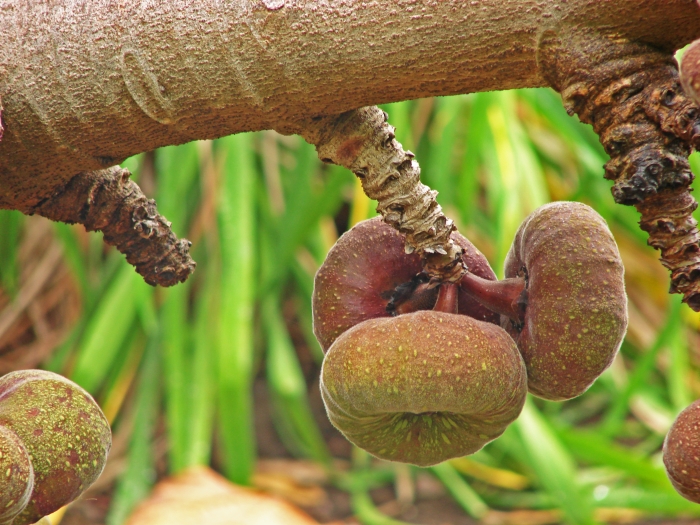Roxburgh Fig
(Ficus auriculata)
Roxburgh Fig (Ficus auriculata)
/
/

Koppchen
CC BY-SA 3.0
Image By:
Koppchen
Recorded By:
Copyright:
CC BY-SA 3.0
Copyright Notice:
Photo by: Koppchen | License Type: CC BY-SA 3.0 | License URL: https://creativecommons.org/licenses/by-sa/3.0 | Uploader: Koppchen | Publisher: Wikipedia Commons |















Estimated Native Range
Summary
Ficus auriculata, commonly known as Roxburgh fig, is a semi-evergreen tree native to subtropical and tropical regions of Asia, including India, Nepal, southern China to Malaysia. It thrives in a variety of habitats such as moist valleys, open forests, and along riverbanks. The tree typically grows to a height of 5–10 m (16–33 ft) with a dense canopy of large, rounded, and heart-shaped leaves that can be up to 30 cm (12 in) in diameter. The Roxburgh fig produces small, red to purple figs that are borne in pairs on the leaf axils and are attractive to birds and wildlife.
The Roxburgh fig is valued for its ornamental foliage and is often used in tropical and subtropical gardens. It can serve as a shade tree due to its broad canopy. The plant is relatively easy to maintain, requiring moderate water and thriving in well-drained soils with high organic content. It prefers full sun to partial shade. However, gardeners should be cautious as Ficus auriculata can develop aggressive roots that may damage nearby structures or pavements. Additionally, it is potentially invasive outside its native range, so it is essential to consult local regulations before planting.CC BY-SA 4.0
The Roxburgh fig is valued for its ornamental foliage and is often used in tropical and subtropical gardens. It can serve as a shade tree due to its broad canopy. The plant is relatively easy to maintain, requiring moderate water and thriving in well-drained soils with high organic content. It prefers full sun to partial shade. However, gardeners should be cautious as Ficus auriculata can develop aggressive roots that may damage nearby structures or pavements. Additionally, it is potentially invasive outside its native range, so it is essential to consult local regulations before planting.CC BY-SA 4.0
Plant Description
- Plant Type: Tree
- Height: 10-30 feet
- Width: 15-25 feet
- Growth Rate: Moderate
- Flower Color: N/A
- Flowering Season: Spring
- Leaf Retention: Evergreen
Growth Requirements
- Sun: Full Sun, Part Shade
- Water: Medium
- Drainage: Slow, Medium, Fast
Common Uses
Bird Garden, Edible*Disclaimer: Easyscape's listed plant edibility is for informational use. Always verify the safety and proper identification of any plant before consumption., Low Maintenance, Potted Plant
Natural Habitat
native to subtropical and tropical regions of Asia, including India, Nepal, southern China to Malaysia
Other Names
Common Names: Elephant Ear Fig
Scientific Names: , Ficus auriculata, Ficus roxburghii, Ficus macrocarpa, Ficus rotundifolia, Ficus oligodon, Ficus hainanensis, Ficus hamiltoniana, Ficus pomifera, Ficus regia
GBIF Accepted Name: Ficus auriculata Lour.